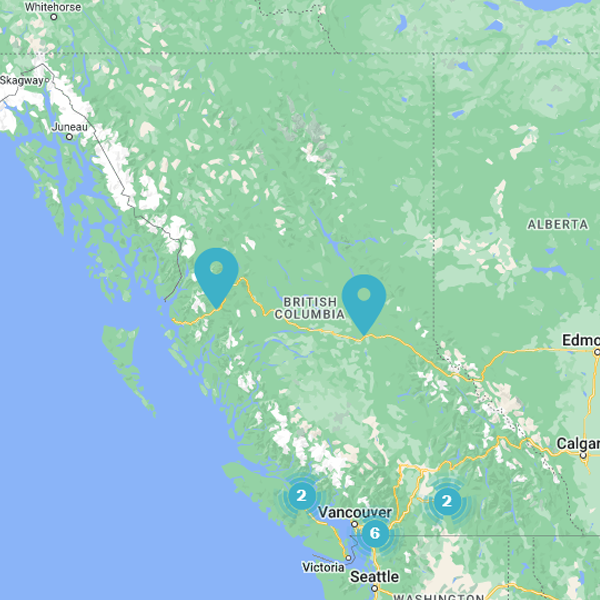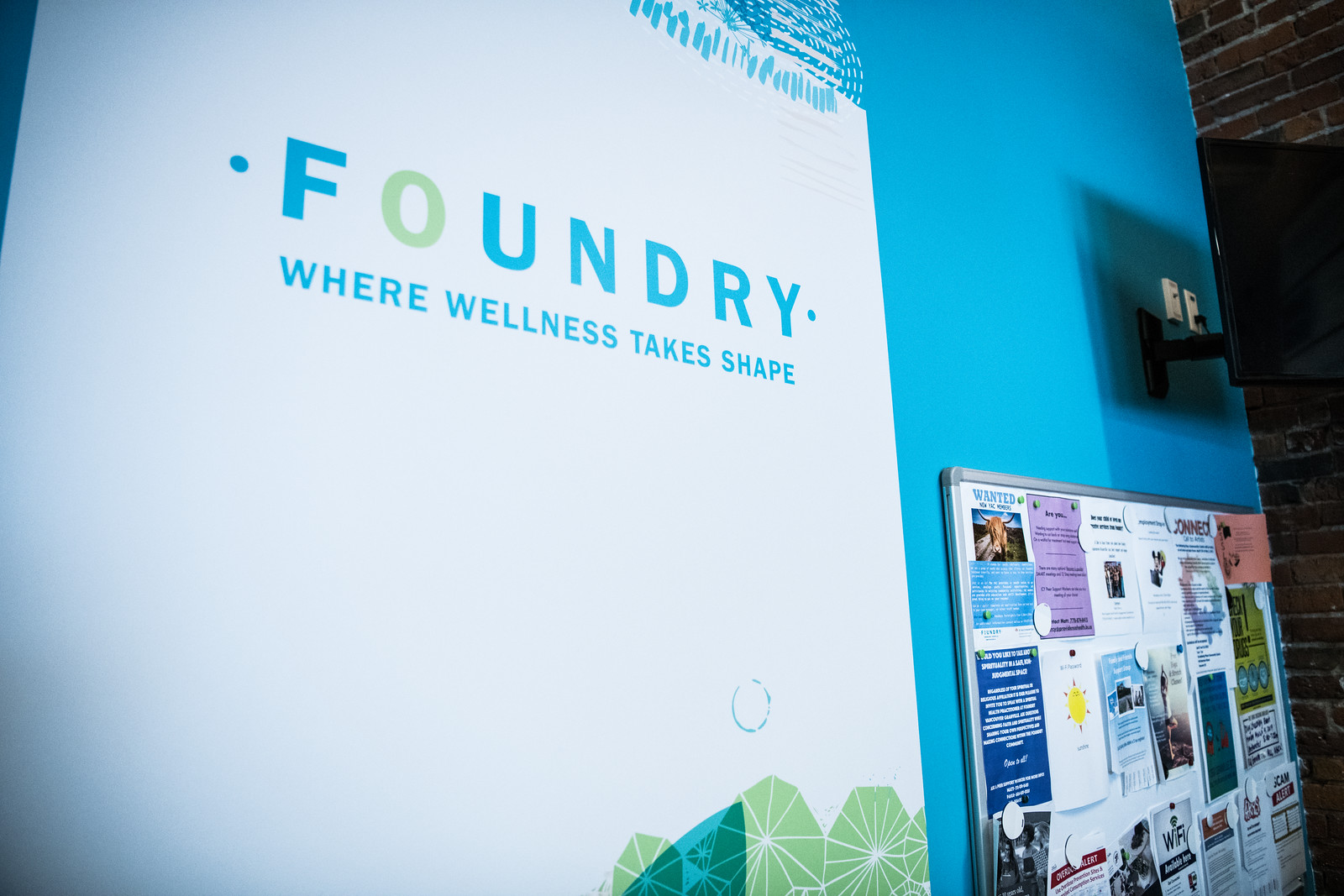Growing up in an environment that promotes healthy emotional and social development lays the foundation for good mental health as an adult. However, young people aged 15–24 are more likely to experience mental illness than any other age group, which is especially true in marginalized and underserved populations including gender- and sexual orientation-diverse youth. Stigma, prejudice, and discrimination, combined with internalized negative feelings, all contribute to poor mental health. It can be challenging for youth to seek help because of their dependency on their families and lack of youth-specific resources.
A lonely story of self-discovery
Naomi Patterson, an actively transitioning trans-woman, shares her experience growing up in an unsupportive, emotionally abusive environment.

“I didn’t know that anything was different about me and, as a 5-year-old, I had no concept of gender. I was watching a Canadian kid’s cartoon called Cybersix which has a main character who disguised themselves as a male school teacher during the day and then at night they were a leather-clad crime-fighting vigilante female. I loved the show, but when a family member I looked up to commented on the show being weird because of this gender-bending character, my brain categorized this as bad.”
For Naomi, this was the beginning of the negative reinforcement around questioning gender norms that would persist for years. She grew up hearing the word “gay” being used in a derogatory way, all while being raised in an environment where the idea that “boys don’t cry” was the standard. Then, when she was 10 years old, a late-night show broadcasted images of breasts and Naomi felt something new. “The first thing I did was put my hands over my chest and I remember that so clearly. I looked at the screen and looked at me and felt incredible envy and sadness. I didn’t understand these feelings and transgender was not something I had ever heard of.”
This was the start of her gender dysphoria, Naomi emphasizes, “I didn’t know what these feelings were that were occupying my headspace. I was starting to dissociate from reality when going through adolescence and hating my body, especially as it started changing during puberty.” It wasn’t until a sex education class used the word “transsexual” that Naomi recognized that she wanted to be a girl, but there was no supportive outlet, neither at home, at school, or within the community, to discuss these feelings.
Youth, gender, and mental health: there’s work to be done
Naomi is not alone in her identity-discovery journey. In 2021, Canada, the first country in the world to collect census data on transgender and gender-diverse people, found that nearly one in 300 people aged 15 or older identified themselves as transgender and/or non-binary. When looking at age, the proportion of transgender and gender-diverse people was three to seven times higher for individuals born between 1981 and 2006 than earlier, with nearly one in 100 young adults ages 20–24 identifying themselves as transgender and/or non-binary. With increased acceptance and understanding of gender diversity, younger generations may feel more comfortable reporting their identity, but there is still much work needed to be done to support them and their mental health.

A study led by Master’s alumni Rachal Pattison, under the supervision of Advancing Health Scientist Dr. Skye Barbic and co-authored with Dr. Joseph Puyat, found that transgender and non-binary youth reported significantly higher levels of mental health distress.
“With my background in sociology, I’ve always been curious about how gender acts within our society and looking at issues from a gendered perspective,” said Rachal. “I had previously worked in women’s corrections facilities as a mental health therapist. When Bill C-16 passed that allowed for people to choose either a men’s or women’s facility based on how they identify, I was intrigued by the different conversations around gender in my workplace at the correctional facility compared to the language being used by the policymakers. I was also exploring my own ideas about gender at this time, and had the opportunity to work with Dr. Barbic looking at youth, gender, and mental health.”
Barriers to accessing care
Not only did transgender and/or gender non-conforming young people report more mental health distress compared to their cisgender peers, they often reported facing barriers with health and mental health services, including distressing interactions with health professionals. Rachal’s thesis provides a more in-depth look at these results, including sharing quotes from qualitative interviews that identified three themes that transgender and/or gender non-conforming youth experience when accessing health services, including mental health services.
The first theme, quoted as “microaggressions will build up” highlights distressing interactions with health providers. In these interactions, transgender and/or gender-diverse youth seek care in various settings and experience disrespectful, upsetting, and invalidating assumptions about their gender identity. They often find themselves having to self-advocate, correct, and self-justify their identity in a setting that is there to provide support which can lead to needing additional mental health support.
The second theme, quoted as “I remember why I don’t wanna go there,” highlights barriers and facilitators to care regarding physical clinical environments and differences experienced between youth and adult care. For example, the presence of gender-neutral bathrooms and posters, flags, and pamphlets recognizing gender diversity help indicate a supportive environment. However, often transgender and/or gender non-conforming youth have to explain concepts and concerns like pronoun usage and gender identity, which is not only mentally taxing but monopolizes valuable time with the health care provider. This lack of knowledge was described as standard for most provider interactions. An article published in 2019 highlighted that educating health care providers may not be enough to influence care. Using an online survey, the study found that increasing the hours of education related to transgender and gender-diverse health care may not actually improve providers’ competence because transphobia can be a barrier to learning.
Another common experience highlighted by the study was that interviewees felt more cared for when they were under 18 with part of the reason being that several services are free. However, at this young age their needs and identities were not always taken seriously. Once they turned nineteen, there was an opposite effect where they were taken more seriously but felt cared for less with decreased access to free services.
The third theme, quoted as “I feel completely invisible to society,” described the oppressive effects of the gender binary. The individuals interviewed mentioned that although they do not often experience outright discrimination or hatred, the acts of ignorance or oversight are ongoing. Feeling invisible, even in health services, contributes to their mental distress. Something seemingly simple as filling out written documentation for health services can be a negative experience when forms often only have “female” and “male” (sometimes “other”) as gender options and don’t provide extra space for pronouns and preferred names.
Foundry to the rescue
However, there is a health service provider in B.C. that is working to improve the experiences of youth, including transgender and/or gender non-conforming. Dr. Skye Barbic is the Head Scientist for Foundry, which provides free and confidential health and wellness support services for young people ages 12–24. It was through Foundry’s unique approach to tailoring care to youth that Rachal was able to analyze quantitative and qualitative data to better understand the mental health of youth for their research.

For example, Foundry’s intake forms provide more gender options to choose from. Rachal explains, “Foundry was providing young people with options outside of man, woman, binary, in the demographic intake forms. Because of this, Foundry was capturing a comprehensive list of non-binary gender options for young people and provides important gender-diverse data which is largely missing from health research.”

With 12 centres currently open across B.C., and 11 more in development, Foundry has filled a crucial niche. “With the help of Rachal’s formal analysis, there is now documentation of what many were suspecting regarding mental health and barriers to care, and Foundry has grown because it helps fills that need,” said Dr. Puyat. “In a health service environment, where there are clear barriers preventing transgender and/or gender non-conforming youth from seeking care, Foundry provides a low barrier one-stop supportive space for all youth, regardless of how they identify.”
“Foundry’s uniqueness is that it’s a learning health system and we don’t operate as silos. The magic of our system is that we are bringing in ideas about the best practices, new practices, and standards, and they can be tested in one centre and across the network,” said Dr. Barbic. “We can then collect that data and figure out how best to help the youth who access the centres’ resources. Our network of centres allows us to work with each other and share knowledge in real-time with centralized data and co-design solutions that work for the local community. What works in an urban centre may not be applicable in a rural area, and vice versa.”

Dr. Barbic also emphasizes the importance of health service organizations being present online, as that is where the majority of young people spend much of their free time and access their information. She emphasizes that researchers and public health officials need to seriously consider the impact social media has on youth.
“On TikTok alone, the hashtag #LGBTQ has been accessed and viewed over 117 billion times. With so many people accessing information online, it is important to understand its influence. This represents a huge gap in research that needs to be looked at as several studies have shown the impact of the online space on the mental health of young people. For support to be effective, we need to better understand all the environments young people experience, both offline and online,” she said.
Support is crucial
Because of the lack of family support, Naomi did not feel comfortable exploring her gender identity during her youth. “Now that I am financially independent, I can finally be myself and I refuse to let anybody have any control over me because of how poor my experiences were,” Naomi said. “Now, I’m seeking care and support as an independent, transitioning adult to help figure myself out, but I have lost years of my life being who I truly am because of a lack of support.”
Having a safe space to seek guidance and support is crucial. But when life at home is not a safe space, there needs to be other options available to youth. Naomi emphasizes, “Any resource would’ve made a significant difference, even a school pride group. I needed a place to feel safe because it certainly wasn’t at home and there were no queer groups or guidance available at school.”
Foundry is now available to provide a safe space, no matter where youth live in the province. Free virtual services are available to both youth and caregivers and Foundry provides peer support, access to primary care, scheduling of virtual and drop-in counseling appointments, support for employment, and access to groups, workshops, tools, and other resources. Their brick-and-mortar locations provide free, respectful, non-judgemental, and strengths-based services in a youth-friendly space tailored to the community they are serving.
With the investment of $46.3 million from the federal government to promote mental health among children, youth, and their caretakers, there is now a focus on taking care of the younger population of Canada. Another mental health resource both youth and adults can access is Bounce Back with a referral from a family doctor.
If you are between the ages of 12-24 and looking for someone to talk to, the care providers and friendly experts at Foundry are here to help you navigate health and social services, resources, and programs. Visit https://foundrybc.ca/get-support/find-a-centre/ to find a centre near you.



